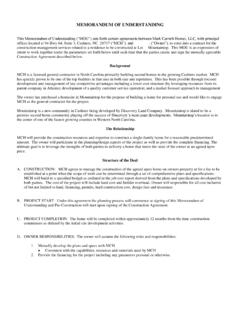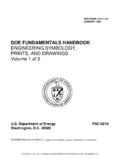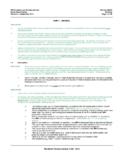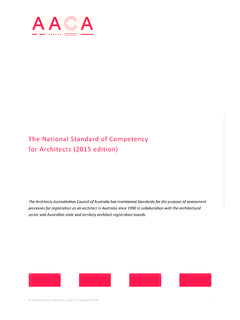Transcription of ARCHITECTURAL SYMBOLS. LINE ... - My Discount Tools
1 Before the carpenter can begin his work, he must have a complete set of construction drawings orprints. He must be familiar with how the drawings are prepared. He should also know how to readthe drawings so that he will understand what he must do to comply with their requirements. Thischapter will help the carpenter to reach that understandingARCHITECTURAL symbols . LINE CONVENTIONS, AND MATERIAL CONVENTIONSThe plan for a building must give all the details necessary toconstruct the building. Therefore, it usually consists of acollection of sheets, called a set of plans. Each sheet shows thedetails of a different phase or part of the construction. Several ofthe sheets will be devoted to floor plans. Other sheets in the setwill show construction details (such as wiring, plumbing, andair-conditioning details and types and quantities of materials).Refer to Appendix A for conversion symbols on construction drawings show the typeand location of windows (Figure 1-1), doors (Figure 1-2), andother features.
2 They show the general shape of an actualarchitectural feature and show any motion that is supposed 1-2. Door symbolsFigure 1-1. Window symbolsLine conventions are differenttypes and weights of linesused to represent thefeatures of an object. Themeaning of a line withcertain characteristics hasbeen standardized and willbe the same on any line conventions mustbe understood in order toread drawings . The lineconventions most oftenencountered in constructionprints are shown anddescribed in Figure conventions aresymbols that show the type ofmaterial used in thestructure. The symbolselected normally representsthe material in some way; forexample, the symbol for woodshows the grain in the wood.(However, it is not alwayspossible to use a commoncharacteristic of the materialfor the symbol.) (Appendix Bgives the symbols for themost common types ofmaterials.)Figure 1-4, page 1-4, showstypical exterior and interiorwall symbols .
3 (Note how thematerial conventions areused in the makeup of thesymbols for masonry, brick,and concrete walls.)The carpenter should knowall of the symbols formaterials to help him read a construction drawing. A symbol on a drawing should always bechecked if there is any doubt about its meaning. Refer to Appendix B for common abbreviationsand DRAWINGSW orking drawings and specifications are the main sources of information for supervisors andtechnicians responsible for the actual construction. The construction working drawing gives acomplete graphic description of the structure to be erected and the construction method to set of working drawingsincludes both general anddetail drawings . Generaldrawings consist of plans andelevations; detail drawingsconsist of sections and PLANSA site plan (also called a plotplan) shows Property lines andlocations. Contours and profiles. Building lines.
4 Locations of structures tobe built. Existing structures. Approaches. Finished grades. Existing and new utilities(such as sewer, water, andgas).Figure 1-5, page 1-5, shows atypical site plan. Appropriateoutlines show the location ofeach building. The new facilitycan be located by referring tothe schedule of facilities onthe plan. The site plan has anorth-pointing arrow toindicate site north notmagnetic north. Each facilityhas a number (or code letter)to identify it in the schedule offacilities. The contour linesshow the elevation of the earthsurfaces. (All points on a contour have the same elevation.)Distances are given between principal details and reference lines. (The coordinate reference lineson the figure are centerlines of the roads surrounding the area.) All distances in a plan viewsimply give the horizontal measurement between two points; they do not show terrainirregularities.
5 (The sizes of proposed facilities are given in the schedule of facilities.)Examine the site plan shown in Figure 1-5 to see what information can be obtained from it. Forexample, the contour lines show that the ground surface of the site area slopes. The location andidentification of each facility are given. Most of the facilities are spaced at least 60 feet apart, butthe library (facility No. 3) and the recreation building (facility No. 4) are only 15 feet apart. Thelibrary is the smallest of the four buildings and is closest to the road- the east wall of the library is20 feet from the centerline of the road, while the other buildings are 30 or 60 feet from are drawings thatshow the front, rear, or sideview of a building orstructure. Sample elevationviews are given in Figure 1-6,page 1-6. Constructionmaterials may be shown onthe elevation. The groundlevel (called the grade)surrounding the structuremay also be shown.
6 Whenmore than one view is shownon a drawing sheet, eachview is given a title. If anyview has a scale differentfrom that shown in the titleblock, the scale is givenbeneath the title of that centerline symbol ofalternate long and shortdashes shows finished floorlines The hidden line symbolof short, evenly spaceddashes shows foundationsbelow the grade that Figure 1-6 showsthe footings are below show the locations and types of doors and windows. Each different type of windowshown in the elevations is marked; the three types of windows shown here are marked W-1, W-2,and W-3. These identifying marks refer to a particular size of window whose dimensions are givenin a table known as the window schedule. In some cases, rough opening dimensions of windowsare given on the drawing. Note that the building shown here has two double doors on each sideand a double door at each end. The elevation also shows that at the end of the building with theloading platform, the door is at the level of the stage floor; all the other doors are at grade PLANSA floor plan is a cross-sectional view of a building.
7 The horizontal cut crosses all openingsregardless of their height from the floor. The development of a floor plan is shown in Figure 1-7,page floor plan may show, among other things, the outside shape of the building; the arrangement,size, and shape of the rooms; the type of material and the length, thickness, and character of thebuilding walls at a particular floor; the type, width, and location of the doors and windows; thetypes and locations of utility installations; and the location of stairways. A typical floor plan isshown in Figure 1-8, pages 1-8 and you read the floor plan in Figure 1-8, note the features of the recreation building. The lineswith small circles show wiring for electrical outlets; appropriate symbols show the plumbingfixtures. These features are important to the carpenter from the standpoint of coordination. Hemay have to make special provisions, at various stages of construction, for the placement ofelectrical or plumbing fixtures.
8 Installation of these fixtures should be coordinated at theappropriate time with the electrician, plumber, and you examine the floor plan, note that the interior of the building will consist of an auditorium,a lobby with a post exchange (PX) counter, a men's toilet, a women's toilet, a projection room on asecond level above the lobby, two dressing rooms, and a stage. The stage may not be apparent but,by noting the steps adjacent to each dressing room, it can be seen that there is a change inelevation. (The elevation view, shown in Figure 1-6 shows the stage and its elevation.)Note that on the floor plan (Figure 1-8, pages 1-8 and 1-9) all building entrance and exit doors arethe same type (1D) and all windows are the double-hung type. All interior single doors are thesame (2D), and two double doors (3D) open into the lobby from the auditorium. The projectionroom will be reached via a 15-riser stairway located in a 12- x 18-foot room.
9 Entrance to this roomwill be from the auditorium through a single door opening into the room. At the top of thestairway, a single door opens into the projection room. The wall of the projection room that facesthe stage (inside wall) has three openings. Note that no windows are shown for the side of thebuilding at the second level where the projection room is located, but windows are shown at themain DRAWINGSD etail drawings are more specific than other types of construction plans. They are generallydrawn on a larger scale and show features that do not appear on other are drawn to a large scale showing details of a particular construction feature that cannot begiven in a general drawing. They show Height. Materials. Fastening and support systems. Any concealed typical wall section,with parts identifiedby name and/or size,is illustrated inFigure 1-9, page figure showshow a structure lookswhen cut vertically bya cutting sections are veryimportant toconstructionsupervisors and tothe craftsmen who dothe actual show theconstruction of thewall, as well as theway in whichstructural membersand other featuresare joined to it.
10 Wallsections extendvertically from thefoundation bed to theroof. Sections areclassified as typicaland SectionsTypical sections areused to show construction features that are repeated many times throughout a SectionsWhen a particular construction feature occurs only once and is not shown clearly in the generaldrawing, a cutting plane is passed through that are large-scale drawings which show features that do not appear (or appear on too small ascale) on the plans, elevations, and sections. Sections show the builder how various parts are connectedand placed. Details do not have a cutting-plane indication, but are simply noted by a code. Theconstruction of doors, windows, and eaves is usually shown in detail drawings . Figure 1-10 shows sometypical door framing details, window wood-framing details, and an eave detail for a simple type ofcornice. Other details which are customarily shown are sills, girder and joint connections, 1-11, page 1-12, shows how a stairway is drawn in a plan and how riser-tread information isgiven.








